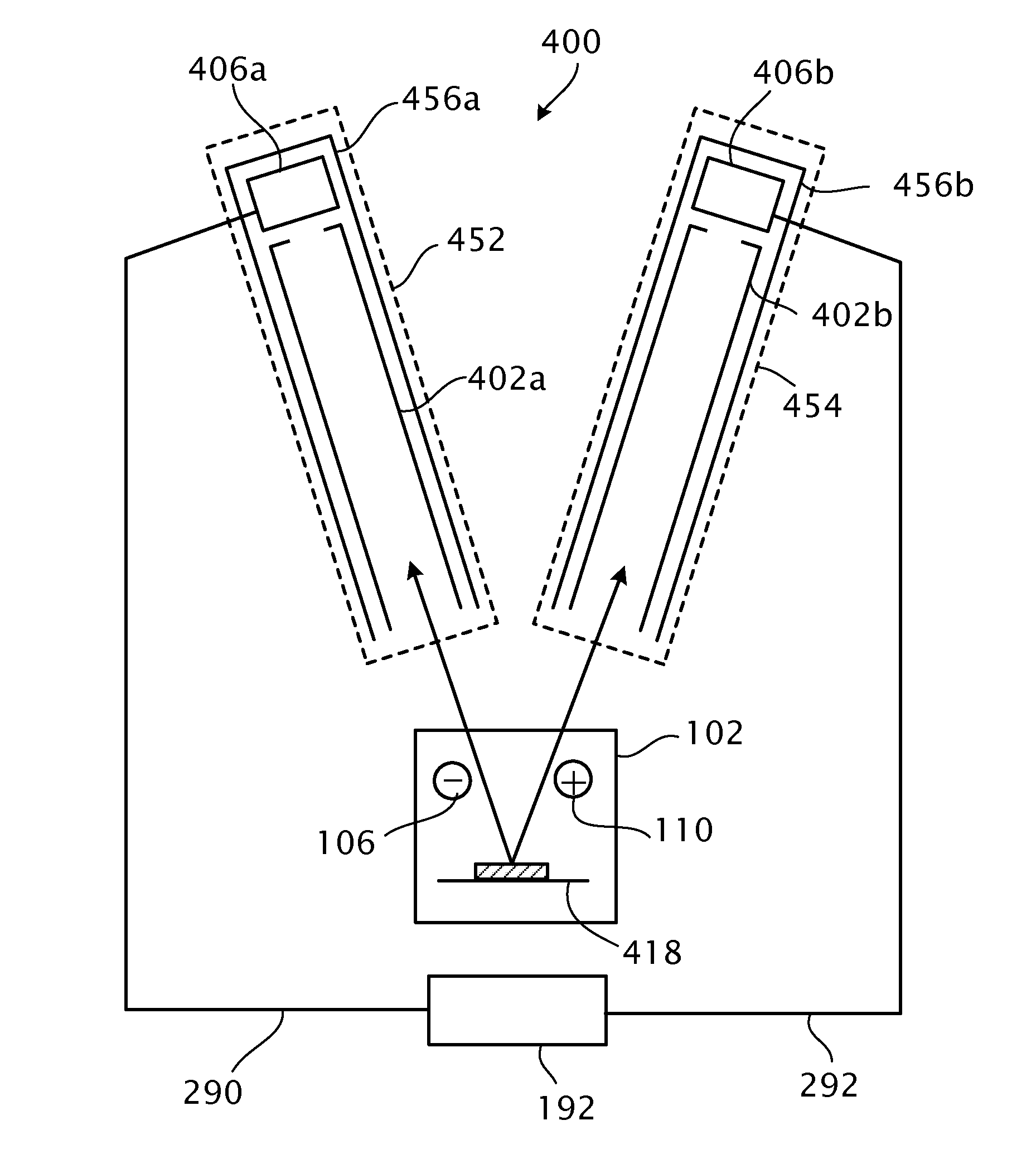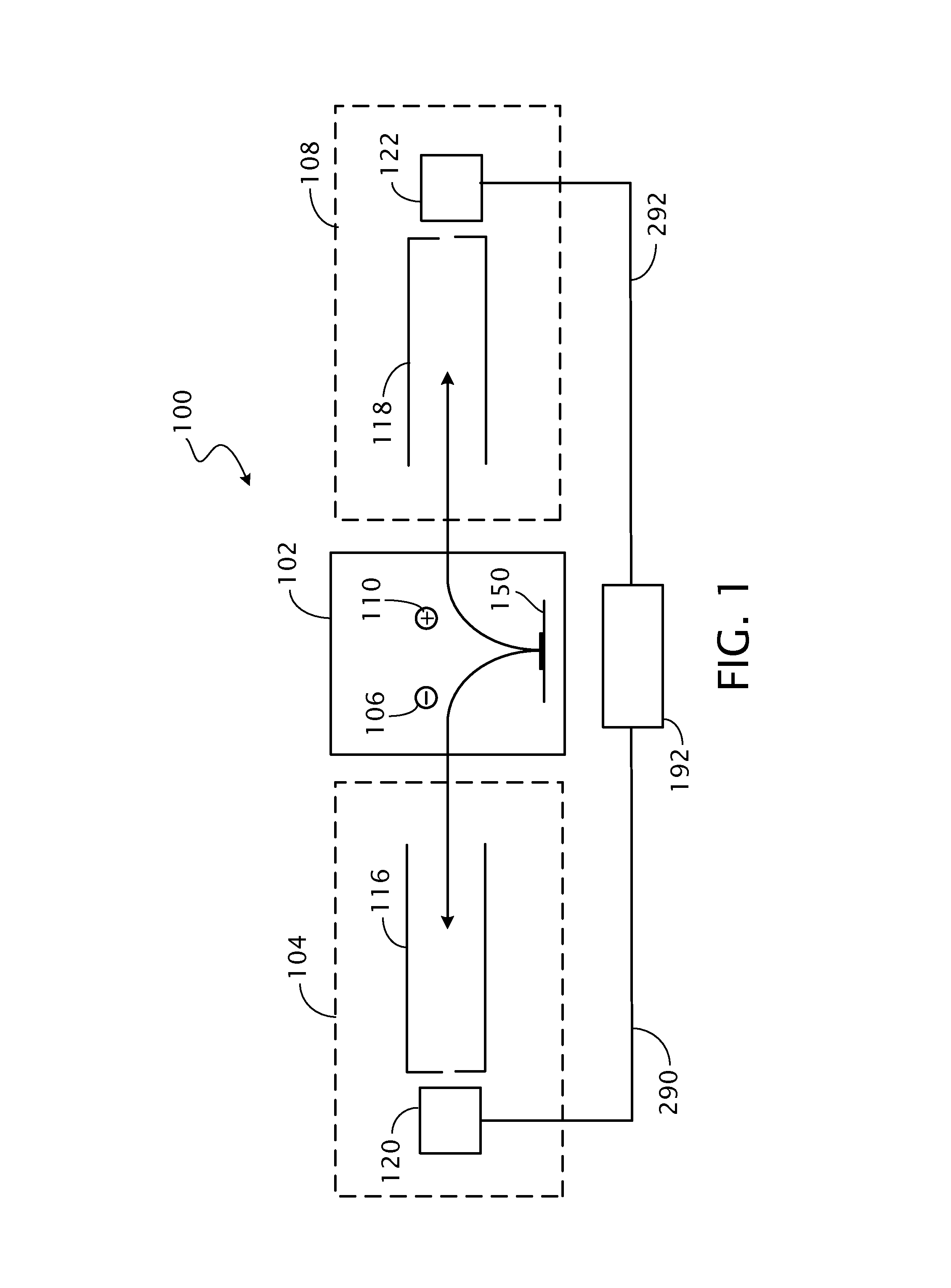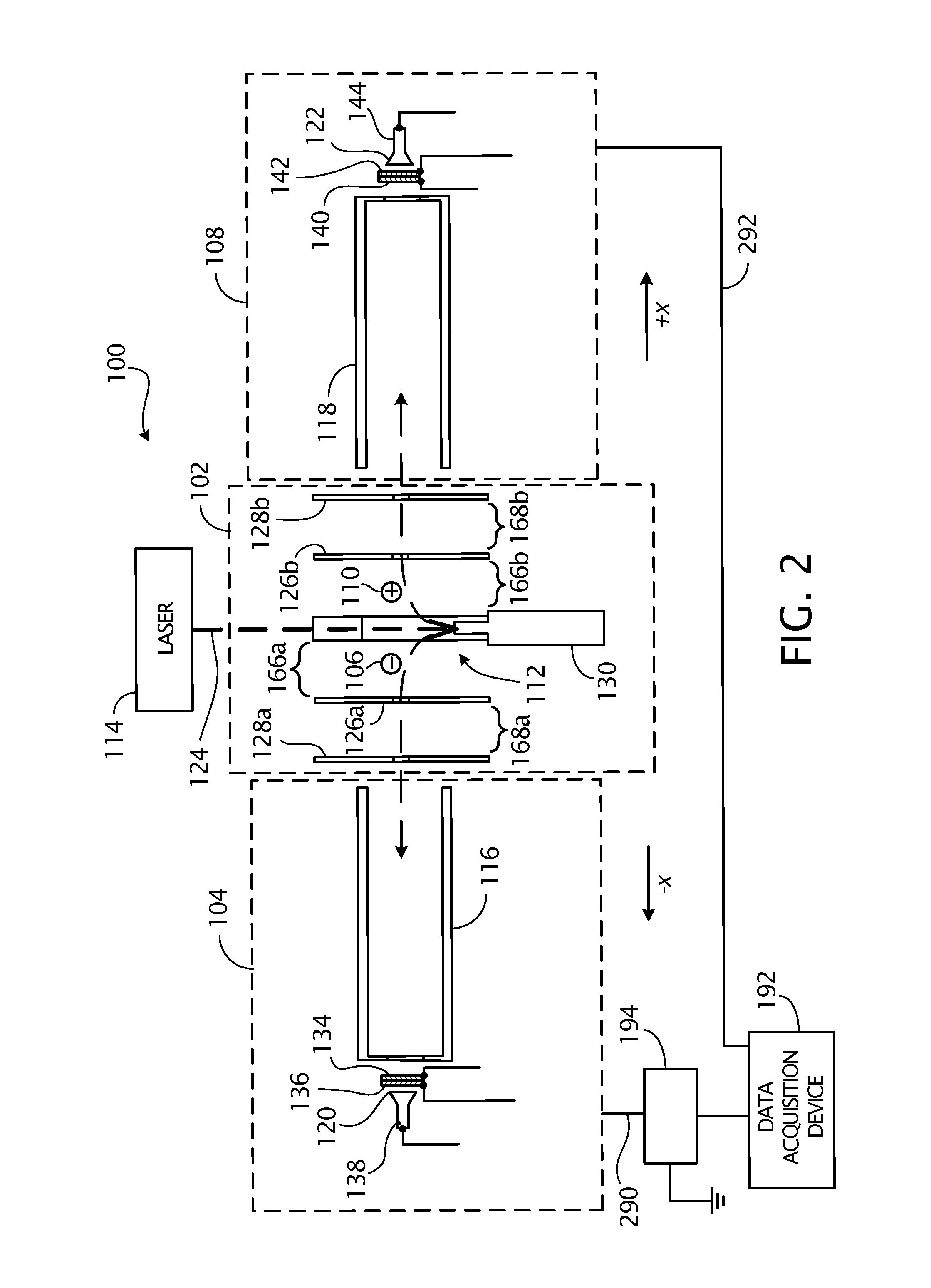Angled dual-polarity mass spectrometer
a dual-polarity mass spectrometer and angled technology, applied in mass spectrometers, particle separator tube details, separation processes, etc., can solve the problems of not being able to capture all of the information of the sample, and losing some information on the types and quantities of ions
- Summary
- Abstract
- Description
- Claims
- Application Information
AI Technical Summary
Benefits of technology
Problems solved by technology
Method used
Image
Examples
Embodiment Construction
[0107]Instead of using time-of-flight mass analyzers, each of the mass analyzers 104, 108, 272, 452 and 454 can use, e.g., a quadrupole mass analyzer, an ion trap mass analyzer, a magnet sector mass analyzer, a Fourier-transform ion-cyclotron-resonance mass spectrometer, or a momentum analyzer. The dimensions of the various components of the mass spectrometers 100 and 400 are not limited to those described above. The type of laser source 114 can be different from what is described above. Instead of using microchannel plates, each of the detectors 120, 122, 406a and 406b can include, e.g., a scintillation detector, an electron multiplier, an image current detector, or an electric current detector. The angle between the axes of the negative and positive mass analyzers 452 and 454 can be any value between 0 to 179 degrees, such as from about 20 to 140 degrees, or in some examples, from about 40 to 100 degrees. The suitable angle between the axes of mass analyzers 452 and 454 depends on...
PUM
 Login to View More
Login to View More Abstract
Description
Claims
Application Information
 Login to View More
Login to View More - R&D
- Intellectual Property
- Life Sciences
- Materials
- Tech Scout
- Unparalleled Data Quality
- Higher Quality Content
- 60% Fewer Hallucinations
Browse by: Latest US Patents, China's latest patents, Technical Efficacy Thesaurus, Application Domain, Technology Topic, Popular Technical Reports.
© 2025 PatSnap. All rights reserved.Legal|Privacy policy|Modern Slavery Act Transparency Statement|Sitemap|About US| Contact US: help@patsnap.com



